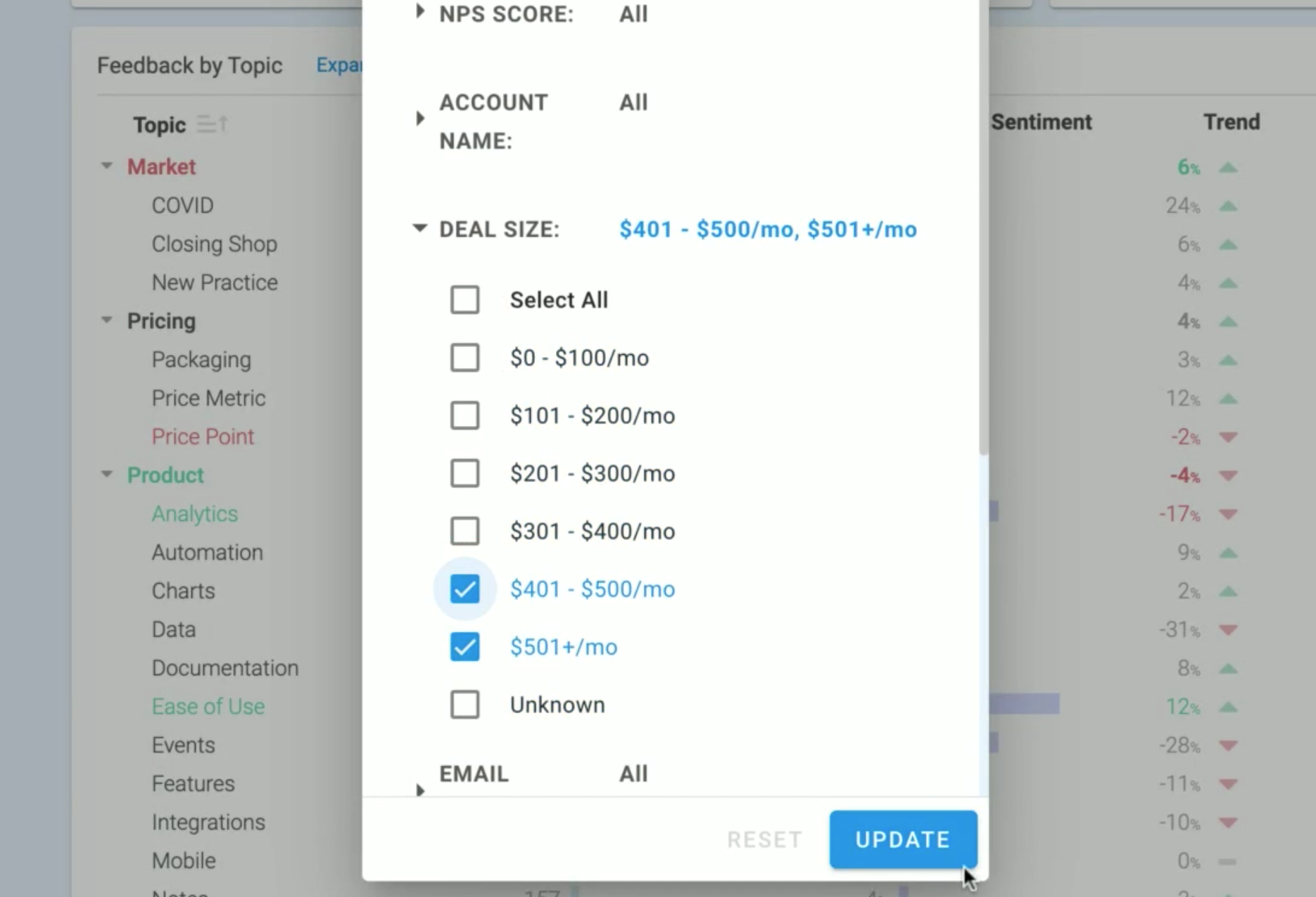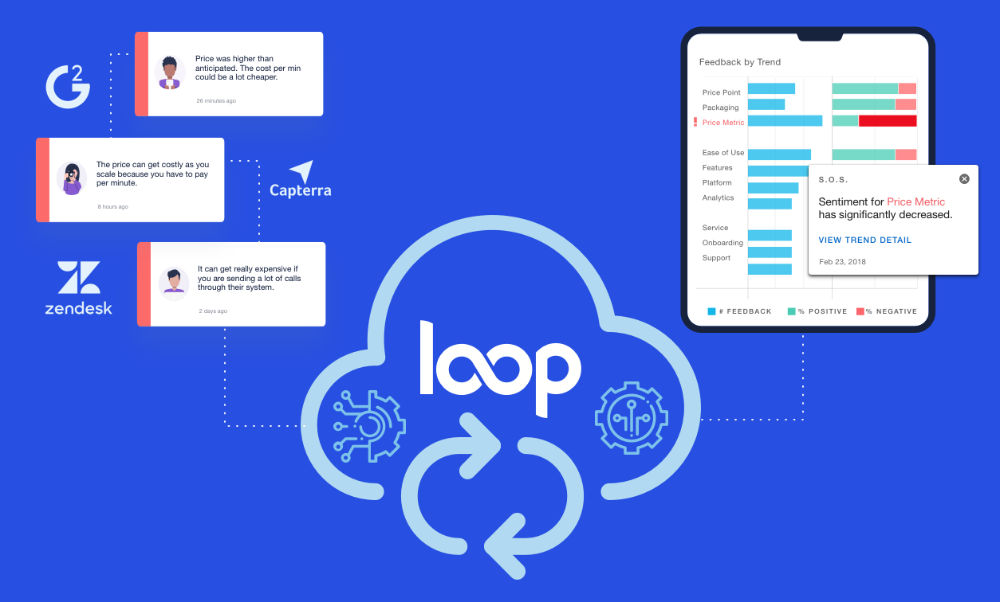Home » Introducing Loop Segmentation
Introducing Loop Segmentation

Lauren Culbertson
Co-founder and CEO, LoopVOC

All feedback is not created equal.
The fact is, some of your customers might have needs that conflict with your business goals.
That’s why context is critical when it comes to understanding what customers are asking for. We can use contextual clues, like demographics and usage data, to understand how customer feedback aligns with our business goals.
For example, let’s say your business goal is to expand MRR by getting customers to upgrade to higher-priced packages. In this case, feedback from customers on paid package plans would be more relevant than feedback from customers on free plans, or prospects in new markets. Whereas if our goal were to increase MRR by getting new customers from new target markets, feedback from prospects would be most relevant.
The better we understand the needs of our unique customer segments, the better we can serve them with personalized solutions, messages, and experiences.
Introducing Loop Segmentation

Today, we’re announcing a huge evolution in Loop with segmentation, a powerful new way to understand and compare feedback across customer groups.
In addition to automatically tagging raw textual feedback with trends and themes, Loop now brings in metadata from places like Salesforce for even deeper analysis. Analyze product gaps by MRR impact and customer type. Identify common issues experienced by different personas across the customer lifecycle. Get the context you need to create targeted solutions, and take action by closing the loop directly with customers.
Check out what’s new in Loop.




